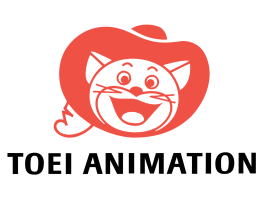
This is the second in a short collection of blogs about the rise of manga and anime in the US. Here you can find part one. It was during the 1970’s that anime and manga began to differentiate itself from its Western counterparts in the US. However, it was still heavily altered when broadcast on television. It was also still geared towards children. In the 1970’s the anime film industry shrunk due to the rise of television. Toei Animation had a reduction in their staff numbers and many went to join other animation studios such as A Pro and Telecom. Another large production company, Mushi Productions (stared as a rival company of Toei Animation by Osamu Tezuka in 1961) went bankrupt and its staff went on to found companies such as Madhouse and Sunrise.
Much of the manga and anime that was created in the 1970’s was not available until the latter half of the decade in the US. It was only during this period that fans in the US became aware of manga that was independent of anime. However, anime was still easier to obtain than manga at the time. In 1973 Richard Kyle and Fred Patten created Wonderworld magazine and the Wonderworld Bookshop to advertise and sell international comic books via mail order. It was also during the late 1970’s that Japanese anime video rooms became standard at fan conventions.

In 1966 Mushi Productions along with Osamu Tezuka’s created an anime adaptation of Choppy and the Princess (Princess Knight). In 1972 after the television show was badly received in the US, it was edited into a movie. Many of these television animes were only broadcast as short films during matinee times in the US. They were also available as 16 mm rental films. In 1975 there was a screening of Japanese television anime for American audiences with a special program at the L.A. Science Fantasy Society. Also in 1975 early commercial VCR tapes were commercially sold, enabling the fans to create pirated copies.
.

A major part of manga and anime fandom in the US was the availability of pirated copies and fan parties in large cities such as L.A. and New York. In 1976 an anime fan named Mark Merlino began taping obscure science fiction and fantasy films to show at fan parties. These parties eventually led to small screens such as the C/FO (Cartoon and Fantasy Organization) which was attended by Osamu Tezuka in 1977. In 1978 the first official American English translation of a manga was released by the New York City War Resisters League. Kenji Nakazawa’s Barefoot Gen (1978) which was a semi-autobiographical manga about a child’s personal experience of the 1945 atomic bombings. Later that year the C/FO ran the first anime dealer’s table at the San Diego Comic Con. They were supported by Toei Animation to test the popularity of unknown anime in the US.


In 1978, Battle of the Planets was produced. This was an American adaptation of Science Team Ninja Gatchaman (1972) that was generally faithful to the original series. However Gatchaman was 105 episodes long while Battle of the Planets was only 85 episodes. This became a common practice in adapting Japanese works. There were significant additions and reductions in the adaptation that were made to increase the appeal of the show to an American audience. It was also to avoid controversy of parental groups, much of the violence and profanity was removed from the adaptation.

Another important Japanese anime that was adapted for an American audience was Star Blazers (1979). It was adapted from Space Battleship Yamato I (1974), II (1978), III (1980). It was heavily cut from the original show. Star Blazers had 77 episodes and due to its overeaching plot had to be shown in the original order. It was also the first anime that was shown in the US to the originally intended age group. Even though the broadcasting standards and practices were harsh at the time Star Blazers was not as edited as other titles like Battle of the Planets. The show retained its mature themes, content, plot, character development and philosophies. The only major change was the names of the characters. Once again the characters names were Americanized to be more accessible to the American audience.There was also a reduction of personal violence, toning down of offensive language and alcohol use, the removal of sexual fan service, and a large reduction of references to World War II. The idea of the honorable enemy is kept intact but the importance of the ship Yamato is completely lost. The backstory of the ship is edited out and the ship is renamed the Argo. It simply became a vessel in which the crew travel.
In the 1970’s manga and anime began to break into the American market. In the 1970’s another genre of manga and anime rose in popularity: Mecha. Mecha manga and anime were extremely popular in Japan. When they were introduced through imported and pirated copies they proved to be popular in the US too. In 1979 Marvel Comics began publishing Shogun Warriors which was paired with Mattel Inc’s toy line. This was the first introduction for many Americans to Japanese Mechs. In the US the small fan clubs in major cities contributed greatly to the rise of manga and anime in the Western markets from the late 1970’s.
Work Cited
Mathews, Janina. Mecha’s Apocalypse : The Significance of the Mechanoid in Japanese Post Apocalyptic Science Fiction Anime. Thesis. University College Cork, 2009. Print.
Napier, Susan J. From Impressionism to Anime: Japan as Fantasy and Fan Cult in the Mind of the West. New York: Palgrave MacMillan, 2007. Print.
Patten, Fred. Watching Anime, Reading Manga: 25 Years of Essays and Reviews. Berkeley: Stone Bridge Press, 2004. Print.

[…] 1970’s: How Manga and Anime Was Consumed in the United States […]
LikeLike
[…] 1970’s: How Manga and Anime Was Consumed in the United States […]
LikeLike